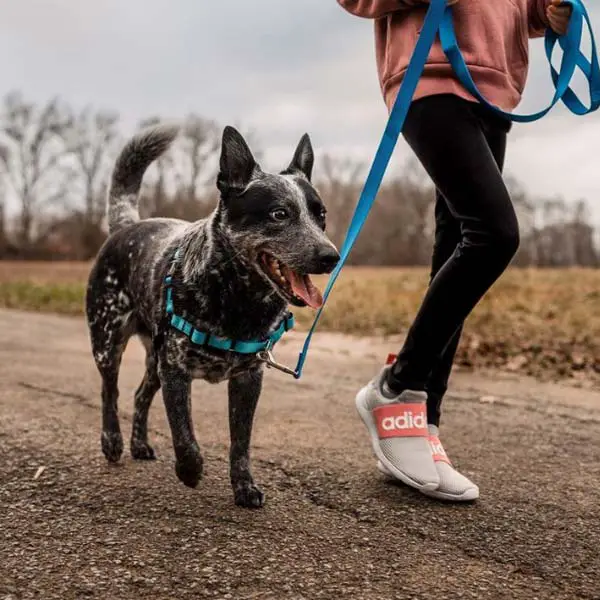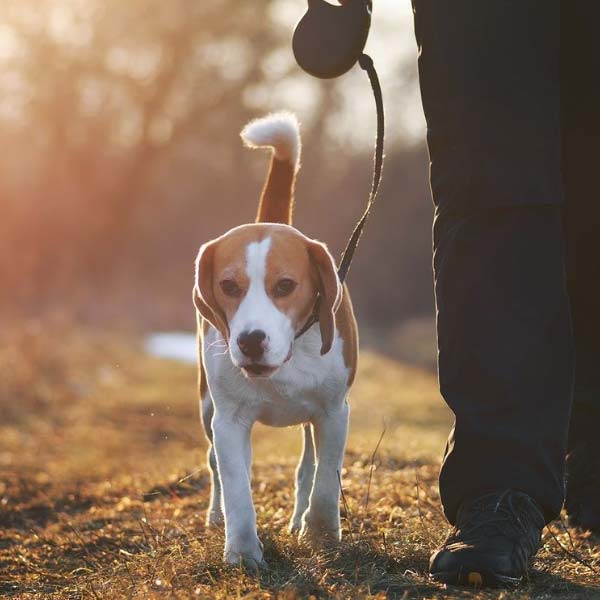Walking your dog is an important part of maintaining their physical and mental well-being. The length of a dog walk can vary depending on several factors, including the breed and age of the dog, as well as their health and energy levels.
For most dogs, a minimum of 30 minutes to an hour of walking each day is recommended. This amount of time provides adequate exercise to keep your dog healthy and happy and helps to prevent boredom and destructive behavior. However, some dogs, particularly those that are high-energy, may require more time. Breeds such as retrievers, huskies, and shepherds, for example, may need up to two hours of walking or more each day to meet their exercise needs.

Older dogs or dogs with health conditions, such as arthritis or heart problems, may require shorter walks with more frequent breaks. In these cases, it is important to consult with a veterinarian for personalized recommendations for your dog.
In addition to providing physical exercise, walking your dog also gives them the opportunity to explore their environment and interact with new sights, sounds, and smells. This mental stimulation helps to keep your dog alert and engaged, and can prevent boredom and destructive behavior.
It is also important to note that different dogs have different exercise needs, and what is appropriate for one dog may not be suitable for another. A good rule of thumb is to observe your dog and their behavior, and adjust the length and frequency of their walks accordingly.
What Times of Day Are Best for Dog Walks?
The best time of day for a dog walk can vary depending on several factors, including the climate, your schedule, and your dog’s needs.
For dogs who live in hot climates, it is best to walk them in the early morning or late evening when temperatures are cooler. This will help to prevent heat exhaustion and other heat-related illnesses. During the summer months, it is also important to be mindful of hot pavement, which can burn your dog’s paws.

If you are a morning person, taking your dog for a walk first thing in the morning can be a great way to start your day. This walk can serve as a bonding opportunity and help to burn off any pent-up energy before your dog settles into their daily routine.
On the other hand, if you have a busy schedule and prefer to walk your dog in the evening, this can be a great way to unwind after a long day. This can also be a good time to provide some mental stimulation for your dog and expose them to new sights, sounds, and smells.
It is also important to note that some dogs may have specific needs or preferences when it comes to the timing of their walks. For example, some dogs may prefer a quiet, low-stimulation walk in the evening, while others may need a more energetic walk in the morning to help them sleep at night. Observing your dog and their behavior can help you determine what works best for them.
In conclusion, the best time of day for a dog walk will depend on several factors, including the climate, your schedule, and your dog’s needs. Be mindful of the temperature, and observe your dog’s behavior to determine what works best for them.
Safe Dog Walking
Walking your dog can be a fun and enjoyable activity for both you and your furry friend, but it is important to keep safety in mind. Here are some tips for safe dog walking:

- Always use a leash: Keeping your dog on a leash is essential for their safety, as well as the safety of others. This will help prevent your dog from running away or approaching strangers or other animals.
- Avoid busy or dangerous areas: Walk your dog in safe and peaceful areas, avoiding busy roads and intersections, and avoiding areas with hazardous wildlife.
- Be aware of your surroundings: Keep an eye out for potential hazards, such as broken glass or other debris, and be prepared to react if your dog encounters something that could be dangerous.
- Use proper equipment: Make sure your dog has proper identification, such as a collar with tags, and consider using a reflective vest or harness for added visibility during nighttime walks.
- Stay alert and focused: Avoid distractions such as texting or listening to music, as these can take your attention away from your dog and the environment around you.
- Keep your dog under control: Teach your dog basic obedience commands, such as “come” and “stay”, and be prepared to use them if necessary.
- Know the laws: Familiarize yourself with local leash laws and dog park regulations, and make sure to follow them to ensure a safe and enjoyable walking experience for you and your dog.
By following these tips, you can ensure that your dog walking experience is safe, enjoyable, and beneficial for both you and your furry friend. Remember to always be mindful of your surroundings and take the necessary precautions to keep your dog safe and secure.

In conclusion, walking your dog is an important part of their overall well-being, and the length of a walk will depend on several factors, including their breed, age, and health. Consult with a veterinarian for personalized recommendations, and always monitor your dog’s behavior to ensure they are getting the right amount of exercise.
